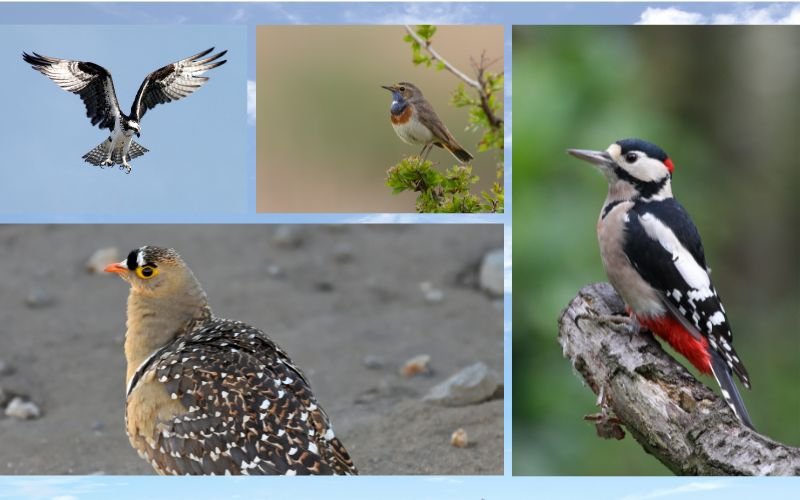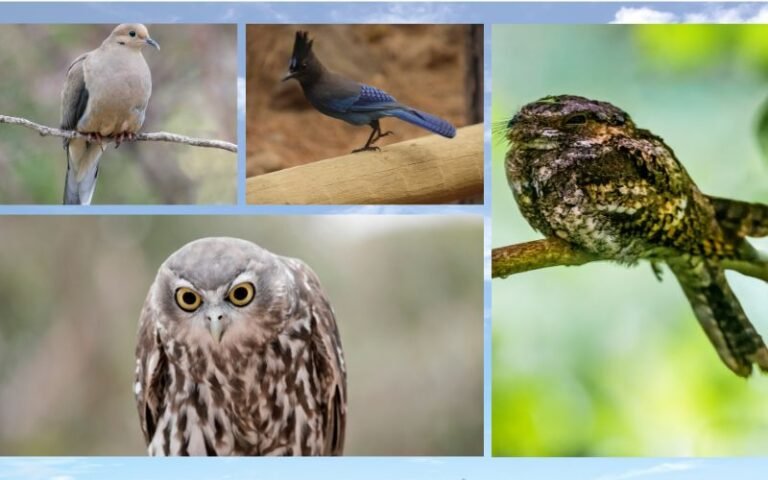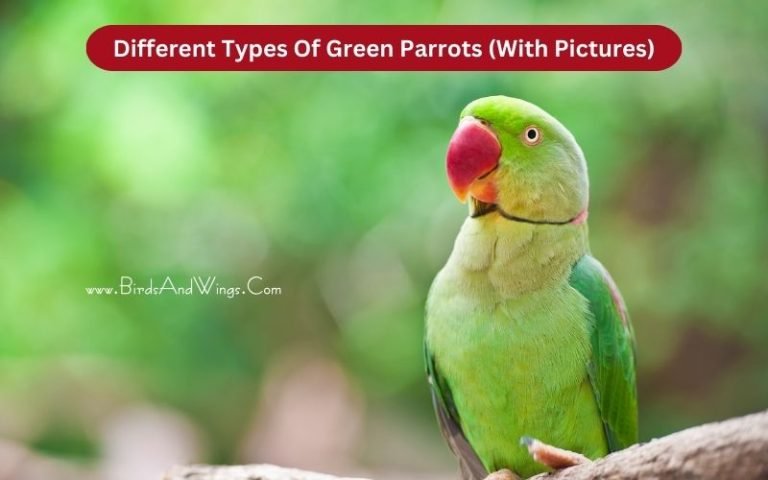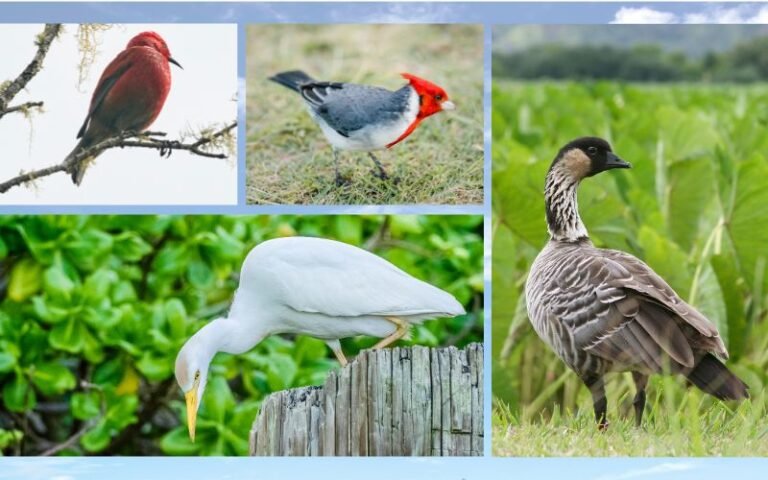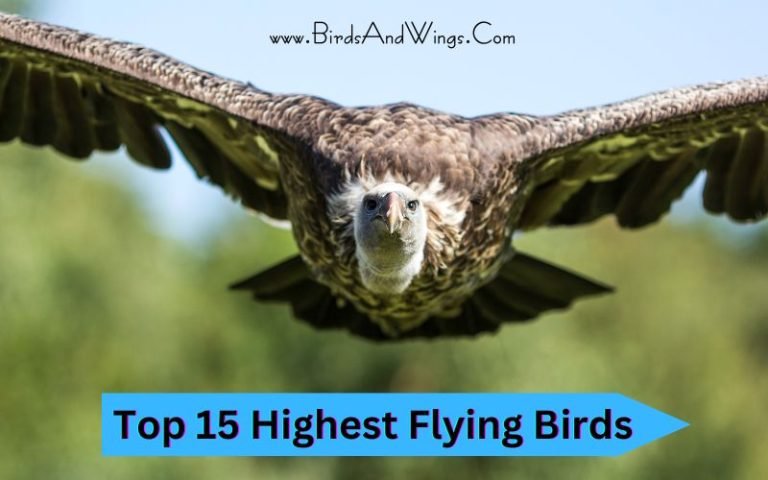9 Brown Birds With White Spots
Brown Birds with White Spots are generally the most common birds spotted around the world. These brown birds with white spots have many varieties, sometimes confusing humans and bird watchers when identifying individual species.
In this article, we will explore the top 9 different species of brown birds with white spots, along with their physical characteristics such as size, wingspan, lifespans, native place, diets, scientific names, distribution, and other facts about them.
So, let’s dive in-depth into these brown birds with white spots.
9 Brown Birds With White Spots
Brown Birds with white spots are the most common birds around the world and have been observed the most by humans or bird watchers.
Without proper guidance and knowledge about them, it’s impossible to differentiate the individual species.
This section will provide the top 9 brown birds with white spots, including their physical characteristics, geographic distribution, habitat preferences, and other attributes needed to survive in nature. This will help you to have a better understanding of avian species.
Bird 1: House Finch (Female)

- Scientific name: Haemorhous Mexacanus
- Lifespan: around 11 years
- Wingspan : 8 – 10 inches
- Native to: North America
- Size: 12 to 15 cm
- Food or Diet: seeds, buds, fruits, plants, etc.
House Finches are small birds related to the Finch family. Male finches have nut-brownish bodies with red patches on their faces and chins, and female finches have brownish bodies with white spots.
These house finch birds are familiar in North America, including New York, Mexico, the southwestern United States, and Canada. These species also prefer semi-open, urban, and suburban places for their habitats.
These species build their nests in cavities in open buildings, hanging plants, or other cup-shaped outdoor decor. House finches made their nests in cavities; sometimes, they even used a nest that was abandoned by other birds.
Female and male birds touch themselves with their bills during their courtship rituals. Sometimes, the male finch brings food for his mates and feeds them. Even when female birds incubate, male birds feed them at that time.
Female birds build their nests about 1.8 to 2.7 meters above the ground. Female finches lay 2 to 6 eggs and incubate them for 12 to 14 days until they hatch.
These House finches birds are considered one of the most annoying birds because they destroy orchards, fruits, and grain fields.
Bird 2: Rose-Breasted Grosbeak (Female)

- Scientific name: Pheucticus ludovicianus
- Lifespan: around 7.3 years in the wild; 24 years in captivity
- Wingspan : 11-13 inches
- Native to: Central America
- Size: 18 to 22 cm
- Food or Diet: insects, seeds, berries, nectar, wheat, fruits, etc.
Rose-breasted grosbeaks are small—to medium-sized seed-eating birds with black heads, backs, and tails and little red on their breasts.
Female rose-breasted grosbeaks have gray brown lowerparts with white spots on their wings and backs. They also have white lines beside their eyes.
These grosbeak birds are mostly found in Central America, the Caribbean, Peru, Venezuela, Colombia, and Costa Rica. Their preferred habitats are open areas and wooded areas.
Male birds usually arrive at their breeding spot early, before the female birds. After breeding seasons, both male and female birds select their nesting sites together and build their nests on tree branches between early May and early June.
They build their nests about 6 to 16.7 meters above ground. Female grosbeak birds lay 1 to 5 eggs, normally 3 to 4 eggs. Their eggs are greenish to purple brownish.
These species can live a maximum of 7.3 years in the wild, and their life cycle in captivity is around 24 years.
Bird 3: Brown Thrasher

- Scientific name: Toxostoma rufum
- Lifespan: around 12 years
- Wingspan: 29-33 cm
- Native to: United States, Canada
- Size: around 23.5 to 30.5 cm
- Food or diet: insects, berries, nuts, seeds, earthworms, snails, lizards and frogs.
The brown thrasher is also regarded as a brown thrush or fox-colored thrush with a brown and white body. These thrasher birds are native to the United States, Texas, Mexico, and Canada.
Most of the inhabitants’ places are woodlands, rocky mountains, dense brush, agricultural areas, and suburban areas. These species’ breeding seasons vary from region to region.
However, in the U.S., the breeding season starts in February and March, when male birds establish their territories with 2 to 10 acres surrounding them. Thrasher birds are mostly observed alone or in pairs.
They do not travel high; rather, they prefer low-level flight very close to the earth’s surface. They spend their maximum time on the earth’s ground surface or near the ground level. They are aggressive in nature by protecting their nests from any intruders.
Bird 4: Wood Thrush

- Scientific name: Hylocichla mustelina
- Wingspan: 30-40 cm
- Lifespan: around 9 years
- Native to: North America
- Size: around 18 to 22 cm
- Food or diet: fruits, insects such as snails, salamanders, etc.
Wood thrush birds are small birds related to the passerine bird family. These birds are mostly native to North America including Central America and Southern Mexico.
Their back side of the body is a muddy brown color and their breasts and belly are speckled with white and dark brown color. These birds are fond of deciduous, mixed forests, dense shrub layers, and moist gourds for their habitats.
During their breeding seasons, these birds prefer tall trees, mostly 16 m (52 feet), with fairly open forests, moist floors, soil, and leaf litter. Their breeding season starts between mid-April and early May.
These birds do not remain with the same partner for several years. Rather, they change their mating partners each season. During their migration season, they migrate to northern Canada, and Florida from the Atlantic coasts.
Later in the winter season, they again migrate to Central America, mostly to the lowlands along the Atlantic and Pacific coasts.
Bird 5: Mistle Thrush

- Scientific name: Turdus viscivorus
- Lifespan: around 3 to 5 years
- Wingspan: around 18 inch ( 45 cm)
- Native to: Europe
- Size: around 27-28 cm
- Food or diet: invertebrates, fruits, berries, earthworms, insects, arthropods, snails, etc.
Mistle Thrush is a medium-sized bird related to the thrush family. These birds have pale gray-brown bodies with brown and white spots on the lower parts.
Most of the mistle thrush birds are spotted in Europe, later Asia, and North Africa. These thrush birds prefer forests, plantations, towns, parks, hedges, farmlands, and urban areas for their habitats.
These species of thrush birds do not travel or migrate to other places and stay with their partners throughout the years. Mistle thrush birds are also loyal to their mates, remain together throughout the season, and do not like to travel or migrate that much.
Their territory covers 1.5 acres, which is almost larger than the woods in the farmlands. Male thrushes get aggressive if anyone is involved in their territories; they even attack intruders or predators during breeding season.
After building the nest, the female mistle lays 3 to 5 eggs there and incubates for 12 to 15 days. At around 14 to 15 days after hatching these mistle birds fledge from the nests.
Bird 6: Asian Koel (Female)

- Scientific name: Eudynamys scolopaceus
- Lifespan: 14 years
- Wingspan: not found
- Native to: Indian subcontinent, China, Southeast Asia
- Size: 39 – 46 cm
- Food or Diet: insects, caterpillars, eggs, and small vertebrates
Asian koel birds, members of a cuckoo bird family, are large birds that are familiar in the Indian subcontinent, Pakistan, Iran, Bangladesh, Sri Lanka, China, and other Asian countries.
The female koel birds have a dark brown body with a white spot. Their back, rump, and wings mainly have white buff spots over brown plumage. These koel birds tend to inhabit areas like woodlands and cultivated lands.
Asian koels are brood parasites, which means they tend to rely on other birds to raise their children. They even lay their eggs on other birds’ nests, such as jungle crows and house crows.
Male koel distracts the host bird, and female koel lays their eggs in that host bird’s nest. They never lay their eggs in empty nests; they prefer nests with one or two eggs.
Unlike cuckoo birds, The young koel does not always harm or destroy the host’s eggs or try to kill the host’s chicks. Later, The eggs hatch in about 12 to 14 days and fledge in 20 to 28 days.
Bird 7: Spotted Nutcracker

- Scientific name: Nucifraga caryocatactes
- Lifespan: up to 16 years
- Wingspan: 49-53 cm
- Native to: Southern Asia, Europe,
- Size: 32-38 cm
- Food or Diet: seeds, pine nuts, insects, small birds, eggs, small rodents and carrion
Spotted nutcrackers, or Eurasian nutcrackers birds, are slightly larger than Eurasian jay. These birds have dark brown and broad wings with short tails.
Their brown plumage is mostly dark chocolate brown, with white spots on the face, neck, mantle, and underparts. They also have large pointed black bills, legs, and feet.
These birds are mostly native to Southern Asia, Europe, Siberia, Eastern Asia, and Japan. Their chosen residence or living environments are mountains and forest areas, including taiga conifer forests in the North.
These nutcracker birds tend to spend their life with one mate or partner. Their nesting areas mostly cover 20 to 30 acres of the ground. Female nutcracker birds usually lay 2 to 4 eggs and incubate about 18 days.
Both male and female nutcracker birds feed their young until they flee from the nests. Young birds or chicks stay with their parents and learn survival techniques like food storage and camouflage themselves from predators, which will help them survive in harsh environments.
Bird 8: Spotted Rail

- Scientific name: Pardirallus maculatus
- Lifespan: not found
- Wingspan: not found
- Native to: Central America, South America, the Caribbean, and Mexico,
- Size: 25 to 28 cm
- Food or Diet: small fish, earthworms, invertebrates, pond weed and insects
Spotted rail birds are large birds with black and brown plumage with white spots over their body. These species have long greenish bills with slightly red spots, red eyes, and pinkish legs.
Rails birds are common in Mexico, Central America, the Caribbean, South America, Costa Rica, Jamaica, Chile, Cuba, and Texas. Their favorite habitats are wetland areas including marshes, swamps, rice fields, and wet grasslands.
Additionally, these rails become more territorial during their breeding seasons. Besides, female rails make cup—or bowl-shaped nests with grass or dead rushes near a shallow watery place.
Female rails lay 2 to 7 eggs in the nests and incubate the eggs until they hatch.
Bird 9: Song Sparrow

- Scientific name: Melospiza melodia
- Lifespan: around 11.3 years
- Wingspan: 18 to 25.4 cm
- Native to: North America
- Size: 11 to 18 cm
- Food or Diet: insects, invertebrates, seeds and fruits
Song sparrow birds are medium-sized birds related to the New World sparrow birds group of passerine birds. These birds have brown plumage with white spots over their body. Besides, they have long tails with brown caps.
These song sparrows are native to North America, including the United States and Canada. They tend to prefer marshes, salt marshes, shrubs, agricultural fields, and roadsides as their habitats.
They are considered one of the most adaptable and abundant species worldwide. Song sparrow birds forage on grounds in shrubs and very shallow water. They make their nests on trees near the ground or in shrub areas.
Besides, these shrubs that cover their territories help them survive in winter seasons and hide their nests from predators, harsh weather, and the environment. This also helps them to reproduce successfully.
Conclusion
In conclusion, these brown birds with white spots are among the world’s diverse species, with an amazing brown and white color contrast. However, some birds are hard to identify because of their similar-looking shapes.
However, through this article, you can differentiate these brown birds by their physical characteristics, geographical location, habitat preferences, food and habits, and other facts about them.
Similarly, birds with speckled breasts, blue eyes, and crests have magnificent features worldwide. Knowing the depth of information about these avian species will help you appreciate their existence and their diverse beauty around the world.

